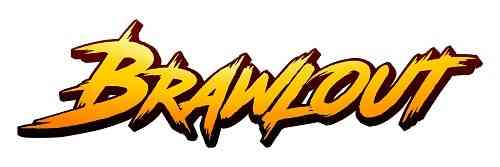Brawlout Review
The Nintendo Switch has become a fantastic stage for new indie darlings to make a statement, but Brawlout has some particularly large issues to address. For one thing, it’s undoubtedly going to be compared to a certain Nintendo brawler franchise, that comparison coming bundled with some lofty expectations. Brawlout doesn’t quite reach that bar, but it does prove itself to be a fighter worthy of recognition.
Let’s address the elephant in the room immediately: Brawlout is absolutely Smash Bros Lite. The fighting mechanics are nearly identical, the arenas all sport multiple platforms and pits on either side of the stage, and damage is dished out in a rising percentage rather than a falling life bar. On the surface it’s a cut and paste job — a decent cut and paste, but still — and for me, that seems lazy and uninspired. The control scheme, in particular, is a dead ringer with basic attacks on A, special attacks on B, and directional inputs with each attack button producing new attacks.
One key element keeps Brawlout from becoming borderline infringement, and that’s the lack of a true blocking mechanic. That’s right, not a single fighter in Brawlout can block attacks, instead putting the defensive focus on dodging and jumping. This decision flies in the face of all fighting games let alone the series that inspired this game.
______________________________
“Brawlout doesn’t quite reach the bar set by Smash Bros, but it does prove itself to be a fighter worthy of recognition.”
At first, I was taken aback by the lack of shield, but as I became more familiar with the concept I have to say it made an impression on me. I like the idea of being at odds with the enemy and the stage concurrently, one false dodge backing me into a corner and massive damage. After a while I was getting around pretty well, handling AI opponents without much trouble. Despite the lengthy learning process, I was enjoying each match and was eager to play more.
That’s actually the biggest downside to Brawlout from where I stand: the learning curve is much steeper than I anticipated. Perhaps that stems from previous Smash experience, but learning these brand new characters and getting a feel for the Brawlout way of fighting took longer than I’d normally be comfortable with. The game takes out edge-grabbing, a staple of Smash Bros since the beginning, and un-learning that was rough in the beginning.

The lack of edge-grabbing is exacerbated by how heavy each of these characters feels under my control. Whenever I’d get knocked off the stage it felt like a lead weight was tied to the character, each one falling much faster than I expected and causing me to mistime my recovery. Even the more agile characters feel like they’re hiding some extra pounds, and many a stock was lost due to my difficulty adjusting. Once I figured it out though, the game really came into its own.
Brawlout does offer tutorials in its single-player modes, including some advanced tutorials to really get into the nitty-gritty, but only at “game speed” did I truly become comfortable with its nuances. The rest of the single-player modes include single fights and Mortal Kombat-style towers ranging in difficulty, giving me plenty of options to play before taking my skills online. The online multiplayer played pretty well in the few matches I experienced, with very noticeable lag or issues, and being able to set up my own lobbies for custom matches is pretty neat.

The game played well once I’d gotten my feet under me, but familiarity doesn’t change one of the game’s most unfortunate flaws: the roster. Despite the 18 character slots on screen the game only truly has eight different fighters, the other 10 being reskins. One character, Olaf Tyson, has three reskins resulting in four different slots for the same character, and that’s incredibly lame. The addition of Hyper Light Drifter and Juan from Guacamelee adds some indie cred, but not even they can overshadow the rest of this mess. This is a cheap expansion of a fighting roster not seen since Clay Fighter 2: Judgment Clay (where the roster doubled from eight to sixteen via only clones) and it annoys me greatly.
Brawlout had an uphill battle going into its Nintendo Switch launch, and while the fighting is good the lack of variety in the roster coupled with the steep learning curve brings the whole experience down a few notches. This does scratch my brawler game itch while I wait for Smash Bros on Switch, but that itch will be back before long. Brawlout is not the permanent solution to my brawl withdrawal, but it’s adequate enough to be fun for a little while.
*** Switch code provided by the publisher ***
The Good
- Solid brawling action
- 8 unique characters with interesting fighting styles
- Good tutorial modes
- Movement over blocking is a cool idea
The Bad
- Heavy characters, hard to recover
- 6 of the 8 characters have a total of 10 clones filling out the roster


